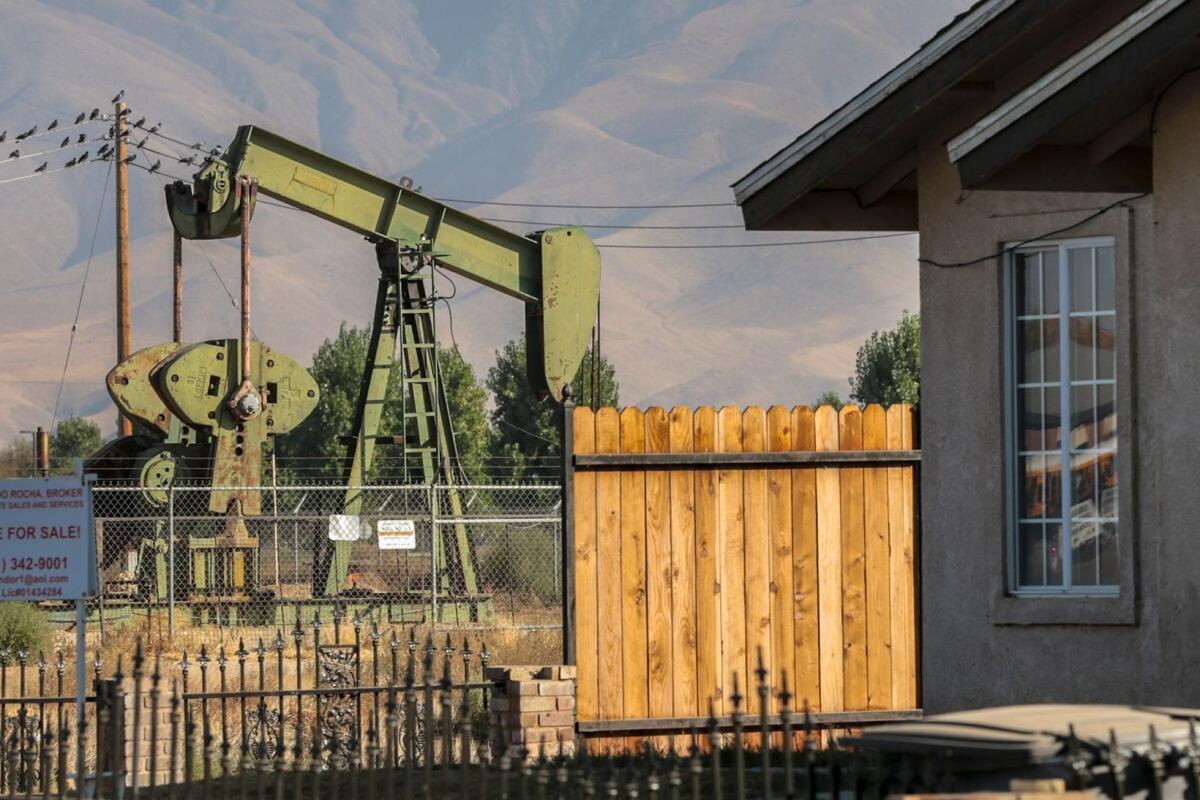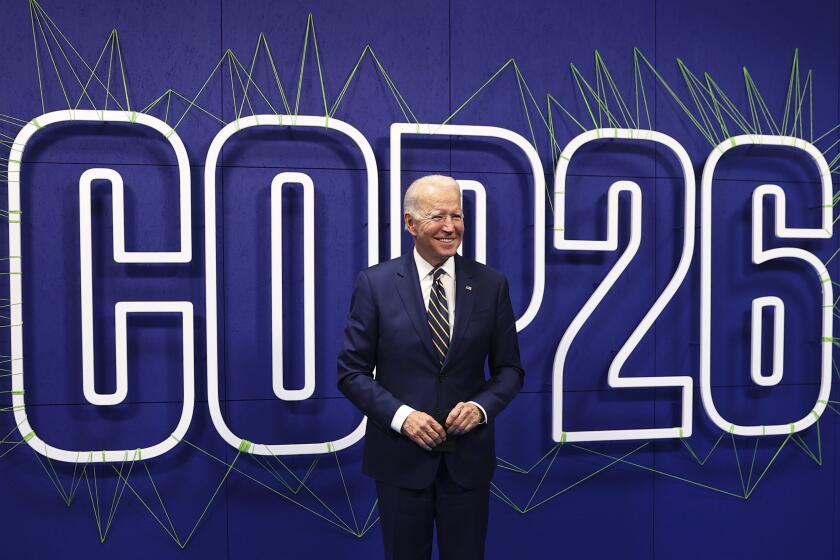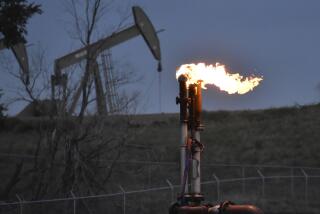Op-Ed: Methane regulations were one victory of the Glasgow climate talks. What comes next?

This year’s global climate talks in Glasgow, Scotland, came with the usual sense of anticlimax: lots of lofty rhetoric, too little action. But world leaders made at least one meaningful pledge. More than 100 nations, including the United States, committed to reducing methane emissions by 30% by the end of decade.
This commitment is a big deal. Methane, the “evil twin” of carbon dioxide, is responsible for roughly half of historical climate warming to date, despite being marketed as the cleaner burning fossil fuel. After flying under the radar for far too long, methane is finally having its moment of policy action.
Of course, there’s ample reason to be skeptical of these promises. Climate action plans of the past have been heavy on feel-good goals, yet light on meaningful action. Fortunately, we have a pretty good blueprint for where to focus our efforts on methane. Reining it in is one of the climate goals we can achieve fastest, and with the most consequence.
The COP26 pact appears to offer a chance of keeping the warming of the planet below 2 degrees Celsius. That’s not good enough, but we can build on it.
Methane is the primary constituent of natural gas and can trap over 80 times the amount of heat that carbon dioxide can. The Intergovernmental Panel on Climate Change’s October report underscored how urgently the world needs to control methane — concentrations of the gas were estimated to be higher in 2019 than at any time in at least 800,000 years, contributing to the warming that increasingly fuels wildfires, superstorms, droughts and other climate threats globally. Given methane’s extreme impacts on temperature but relatively short lifetime in the atmosphere — about 12 years, whereas carbon dioxide persists for centuries — methane reductions are the most effective way to slow warming in the near term.
Reducing methane is also good for public health: It leads to the formation of ground-level ozone, linked to more than 1 million pollution-related deaths every year and millions more instances of chronic disease.
An estimated 60% of methane emissions are caused by human activity, with the vast majority coming from three industries: agriculture, energy and waste management. Livestock accounts for 32% of human-caused methane emissions, highlighting a particular need for agriculture to rethink its practices.
But many environmental and energy experts point to the oil and gas sector as key, because there are practical steps available now that could quickly curb its methane emissions.
To start, the oil and gas industry emits methane from wells that aren’t even used anymore. The Environmental Protection Agency has reported there are around 3.4 million abandoned wells nationwide leaking methane and carbon dioxide into the atmosphere. (California has an estimated 5,500 deserted wells.) The overwhelming majority are not plugged and have no known operator, or none capable of plugging them. Environmental regulators are discovering more orphaned wells all the time — the number on the EPA’s list has grown by 84% since 1990. They are often found in odd places, deep in the woods and along riverbanks, sometimes even beneath people’s homes. In 2019 alone they emitted an estimated 263,000 metric tons of methane.
There’s tremendous opportunity to find and plug as many of these wells as possible, fast, especially in top energy-producing states like Texas and Pennsylvania. These efforts will rapidly reduce emissions while creating tens of thousands of green energy sector jobs in the process. President Biden was right to allocate nearly $4.3 billion in grants for states to plug and remediate these wells in his bipartisan infrastructure law. Federal funds distributed through the states can be used to hire workers from the shrinking oil and gas industry to carry out well-plugging programs.
Another big source of methane comes from leaking components and equipment at well sites and gas compressor stations. Leaks can occur randomly or result from abnormal or improper operating conditions. They can be detected using advanced technologies including infrared cameras and then be quickly repaired, which the industry should be required to do.
Methane can be further controlled by eliminating the practice of venting or flaring excess gas into the atmosphere, properly sealing storage tanks and using electricity rather than gas to power onsite equipment. The International Energy Agency estimates that 75% of worldwide methane emissions from these sources could be eliminated by expanding the use of available processes and technologies.
For industry regulations, the EPA must set a stringent baseline for methane control that all oil and gas operators have to meet. While states like California have led the way with comprehensive methane controls over the years by identifying strategies like frequent, routine inspections, others need to step up and go beyond minimum federal requirements. Actions to reduce emissions will fail if they occur in regional silos.
We need to make the current oil and gas system more efficient and less wasteful. But to achieve lasting methane reductions, we have to move away from gas and other fossil fuels altogether.
Natural gas has been falsely hailed as a “bridge fuel” between coal and oil and renewable energy because it emits less carbon dioxide than other fossil fuels. Yet as the IPCC report shows, focusing on carbon dioxide is shortsighted. Because of methane’s outsized impact in the short term, gas is actually a bridge to faster warming.
If we are to make headway in curbing greenhouse emissions and climate change, cutting methane is an essential place to start.
Joseph Otis Minott is executive director and chief counsel at the Clean Air Council.
More to Read
A cure for the common opinion
Get thought-provoking perspectives with our weekly newsletter.
You may occasionally receive promotional content from the Los Angeles Times.












